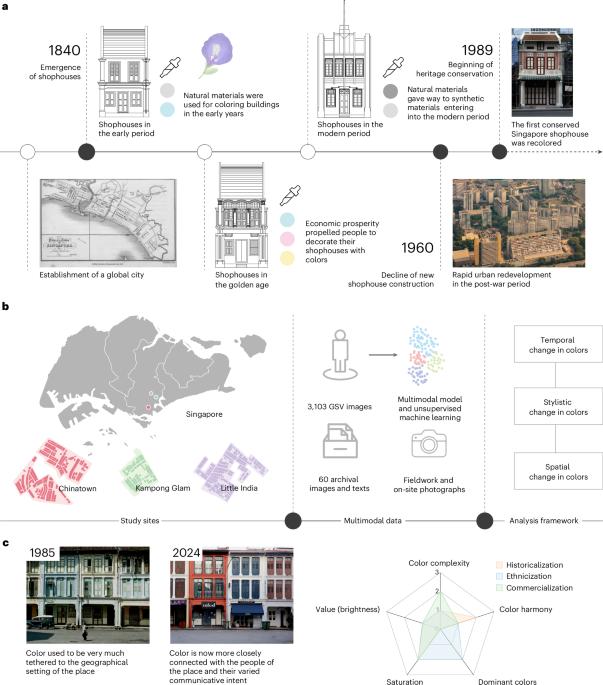Sustaining the local color of a global city
引用次数: 0
Abstract
Color plays a significant role in shaping the urban environment as well as serving as a vivid expression of the culture of its people. Sustaining the local color through urban heritage conservation has proven to be an effective means. Yet, these strategies often rest on the assumption that each heritage site has its color palette remaining unchanged over time. As cities become more cosmopolitan, with increasingly diverse and migrating populations, we question how this shift might influence the local color and its conservation strategies. In this study, we examined the chromatic reconstruction of 3,103 heritage buildings in Singapore using a combination of computational machine learning techniques and non-computational archival and fieldwork methods. Our analysis of text and image data spanning over 40 years before and after heritage conservation in Singapore reveals that for those heritage sites that are still inhabited, local color is not always constant but ongoing and imbued with diverse cultural meanings over time. Historicization, ethnicization and commercialization serve as the key trends in expressing meaning throughout conservation, manifesting in five dimensions, namely, dominant colors, color complexity, color harmony, average saturation and average value. The dynamic change in local color bears significant implications for heritage conservation. We argue that color should be seen as an indispensable part of the sociocultural ecology, rich in meaning and continuously evolving, rather than merely an objective attribute of the material artifact to be preserved in isolation. Urban heritage embodies the tension between preservation and dynamism. Focusing on historic sections of Singapore and using archives, fieldwork and machine learning, this study finds that color is an evolving part of the sociocultural ecology of a city and its heritage.

保持全球城市的地方色彩
色彩在塑造城市环境中扮演着重要的角色,同时也是人们文化的生动表达。通过城市遗产保护来保持地方色彩已被证明是一种有效的手段。然而,这些策略往往基于这样的假设,即每个遗产遗址的调色板随着时间的推移保持不变。随着城市变得更加国际化,人口越来越多样化和流动,我们质疑这种转变如何影响当地的颜色及其保护策略。在这项研究中,我们结合了计算机器学习技术和非计算档案和实地调查方法,研究了新加坡3103座遗产建筑的色彩重建。我们对新加坡遗产保护前后40多年的文本和图像数据进行了分析,结果表明,对于那些仍然有人居住的遗产地,当地的色彩并不总是恒定的,而是持续的,并随着时间的推移充满了不同的文化意义。历史化、民族化和商业化是整个保护意义表达的主要趋势,表现在主色、色彩复杂性、色彩和谐、平均饱和度和平均价值五个维度上。当地色彩的动态变化对文物保护具有重要意义。我们认为,颜色应被视为社会文化生态中不可或缺的一部分,具有丰富的意义并不断发展,而不仅仅是孤立保存的物质人工制品的客观属性。城市遗产体现了保护与活力之间的紧张关系。本研究关注新加坡的历史部分,并使用档案,实地调查和机器学习,发现颜色是城市及其遗产的社会文化生态的一个不断发展的部分。
本文章由计算机程序翻译,如有差异,请以英文原文为准。
求助全文
约1分钟内获得全文
求助全文

 求助内容:
求助内容: 应助结果提醒方式:
应助结果提醒方式:


